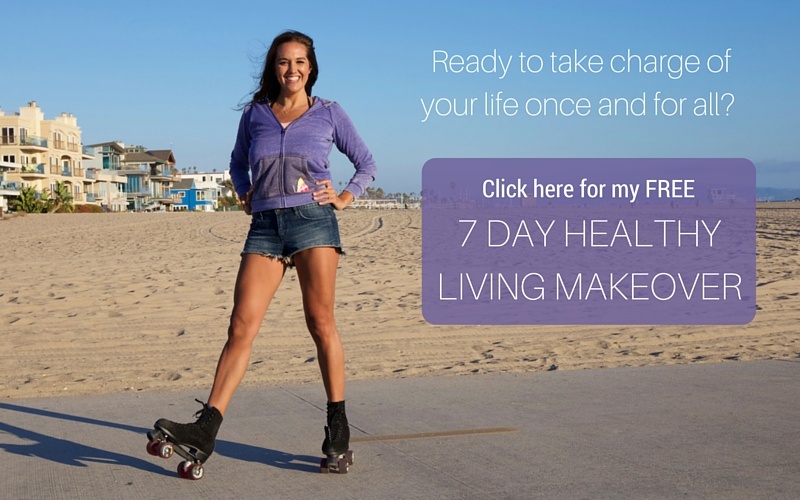
There's a lot of buzz about vitamin D for immune system health including flu prevention and even treatment. But what does vitamin D actually do for our bodies, why are so many folks deficient, and how can we get more?
You probably know we get the “sunshine vitamin” from sun exposure, and it's important enough to be fortifying conventional milk, orange juice, and cereals. The problem is that many people in our modern world are vitamin D deficient. Severe deficiency can cause major health problems, but even slight deficiencies make it harder for us to stay healthy.
Health benefits of vitamin D
Strong bones and teeth
By promoting calcium and phosphorus absorption, vitamin D can prevent rickets and osteoporosis.
Cancer prevention
Despite all of the association between sun exposure and skin cancer, it looks like sunshine may actually PREVENT some cancers. Studies suggest that a higher intake of vitamin D and calcium and/or a higher rate of vitamin D generation through sun exposure is related to lower incidences of lymphoma, prostate, colon, and breast cancers.
Immune health
There's plenty of research on how vitamin D relates our body's ability to fight disease. In 2006, a study at the University of California in Los Angeles demonstrated that the body's cells need vitamin D to trigger the immune response to bacterial threats.
Since it supports the immune system, vitamin D may be able to help protect against the flu. One recent study showed that lower levels of vitamin D during the winter months are one reason the flu virus is easily transmitted during “flu season.”
Vitamin D can also help protect against colds and upper respiratory infections. In 2009, an analysis by the Third National Health and Nutrition Examination Survey (NHANES III) revealed that of nearly 19,000 participants, those with the lowest levels of vitamin D were more than a third more likely to develop a respiratory tract infection than those with higher vitamin D levels.
That's not all
Heart disease and autoimmune disease like type 1 diabetes, rheumatoid arthritis, and multiple sclerosis are more prevalent with vitamin D deficiencies. Low levels of D are also associated with thyroid disease, blood clotting issues, depression, and autism.
Why is vitamin D deficiency so common?
Humans need steady, year-round exposure to sunlight to generate sufficient vitamin D. For many people, this just isn't happening.
Human beings used to spend more time outdoors; our ancestors spent the majority of daylight hours hunting and gathering and, more recently, plowing the fields all day in the sun. Today, even those of us who are sun-lovers spend a large portion of our days working indoors and slathering ourselves with sunscreen when outside.
What's more, fortified dietary sources contain only a tiny fraction of the D needed for optimal health.
Blood levels of vitamin D are not routinely checked, and deficiencies often go undetected until health problems occur. Many U.S. doctors order an inaccurate test (calcitrol or 1,25-dihydroxy-vitamin D) when checking vitamin D levels. This test is not an good measure of the reserves of D. The type of vitamin D to be measured is D3 or cholecalciferol (pronounced koh-luh-kal-sif-uh-rawl).
Who's at risk for vitamin D deficiency?
When you check out this list below, it's no wonder that most folks are Vitamin D deficient these days.
- Women and newborns – In 1999, researchers discovered that 50% of women with osteoporosis who were hospitalized for hip fractures were deficient in vitamin D. Pregnant women, new moms, newborns, and breastfed babies are also at risk for vitamin D deficiency. Newborns' vitamin D levels are correlated with their mothers' levels, and deficiencies increase the odds they'll develop respiratory infections.
- The elderly – Although people of all ages can and do suffer from vitamin D deficiency, people age 50 and older are at a greater risk. This is because the skin loses the ability to generate vitamin D as we age, while at the same time the body isn't as efficient at converting vitamin D into its active, helpful form in the body. A 1996 study found that supplementing with 800 IU of vitamin D can reduce the risk of certain bone fractures in seniors with low vitamin D levels.
- Darker skinned folks – African Americans are another group that's at higher risk for vitamin D deficiency. Darker skin has a higher melanin content, and this means dark skin doesn't generate vitamin D from sunlight as readily as lighter skin.
- Overweight peeps – Larger bodies have higher requirements for vitamin D.
- Snow bunnies – The farther from the equator or the deeper you are into winter months, the less likely you are to get adequate vitamin D from the sun.
- Vampires – Anyone who avoids or limits sun exposure (including using sunscreen) or lives in a non-sunny clime is at risk for low vitamin D levels. Smog and even moderate cloud cover can interfere with exposure to the sun's rays as well.
3 Ways to get adequate vitamin D
As previously mentioned most dietary sources do not have sufficient vitamin D (read here for the exceptions including cod liver oil and lard). Here's how to get your vitamin D:
#1 – The sun
Sun exposure is the most natural source of vitamin D. But lifestyles, climate and environmental factors can make this a challenge. Keep the following in mind if you want to raise your vitamin D levels with sun exposure.
- At least 40% of the body's skin should be exposed to the sun.
- Light skinned people need approximately 10 to 20 minutes of sun exposure daily, while very dark skinned people may need up to 90-120 minutes daily. Go by ¼ of the time it would normally take to burn.
- Washing exposed areas with soap or swimming in chlorine removes natural skin oils necessary for vitamin D generation. Instead rinse with water and wash only “essential” areas with soap.
- Avoid using sunscreens during therapeutic exposure.
- During winter months, additional D3 supplementation is necessary.
#2 – Food and oral supplementation
Second best to Vitamin D from sunshine is Vitamin D from food sources. Read this post to learn the top foods to get Vitamin D naturally.
When it comes to supplementation, be sure to use D3 which is the same natural type that results from sun exposure. Every individual has specific, unique needs when it comes to vitamin D, and there is no way of knowing if the supplement you take will be sufficient correct a deficiency without a blood test. Here's the steps recommended by the experts:
- Begin supplementing with vitamin D3 as follows: Start with 35 IU per pound of body weight. That's approximately 1,000 IU for healthy children under the age of 2 and 2,000 IU for children over the age of 2. For an average sized adult or adolescent, that's 5,000 IU per day.
- After 2 months of taking recommended dosages, have a 25-hydroxy-vitamin D blood test done which test D3, cholecalciferol. Your health practitioner can administer this test or you can order a home kit here.
- Adjust your dose and retest as needed so your 25(OH)D level is between 50-80 ng/ml year-round.
#3 – Tanning beds?!?
This may be a bit difficult to believe, but a safe and effective alternative to sun exposure may be to use tanning beds. If you opt for fake sun, still follow the recommendations above for the real deal. Remember, your skin should not burn or and only lightly tan.
Vitamin D and flu treatment
According to the experts, like Drs. Mercola and Cannell, if you are keeping your your 25(OH)D level is between 50-80 ng/ml year-round, it is very unlikely that you will contract the flu virus. However, if you've gotten this information too late and you're already sick, you can actually treat the flu with extremely high dosages of vitamin D. The dose is 900 IU per pound of body weight taken once a day for three days only, the equivalent of 135,000IU for a 150 pound person.
Vitamin D toxicity and over-dosage
Supplementing with vitamin D3 is generally considered safe despite it being a fat soluble vitamin because the levels for overdose are incredibly high. Though there are no reports of vitamin D toxicity in humans, based on animal studies, it would take 176,000,000 IU of vitamin D to kill a 110 pound person or she would need to be taking approximately 40,000IU daily over time. Toxicity is simply not a concern in levels below 10,000IU daily. You will need to make sure you're getting adequate calcium, magnesium, and vitamin K2 in order for vitamin D to do its job.
Always consult with your health practitioner to evaluate your health condition and medical history to determine what level of vitamin D supplementation and other nutrients is right for you.
Sources:
Ginde, A. Archives of Internal Medicine, Feb. 23, 2009; vol 169: pp 384-390.News release, American Medical Association.
LeBoff MS, Kohlmeier L, Hurwitz S, Franklin J, Wright J, Glowacki J. Occult vitamin D deficiency in postmenopausal US women with acute hip fracture. J Am Med Assoc 1999;251:1505-11.
Liu et al. Toll-Like Receptor Triggering of a Vitamin D-Mediated Human Antimicrobial Response. Science 24 March 2006: 1770-1773.
Martinez ME, Willett WC. Calcium, vitamin D, and colorectal cancer: a review of the epidemiologic evidence. Cancer Epidemiol Biomark Prev 1998;7:163-68. Lieberman DA, Prindiville S, Weiss DG, Willett W. Risk factors for advanced colonic neoplasia and hyperplastic polyps in asymptomatic individuals. J Am Med Assoc 2003; 290:2959-67.
Monterey Mushrooms, Inc., www.prnewswire.com, Sept 30, 2009.
Reid IR. Therapy of osteoporosis: Calcium, vitamin D, and exercise. Am J Med Sci 1996;312:278-86.
www.mercola.com
www.vitaminDcouncil.com












Fantastic post! I was wondering how much to dose the kids for a cold and I knew you’d have the info on your blog!!!
How do I make sure I am getting enough calcium and magnesium?